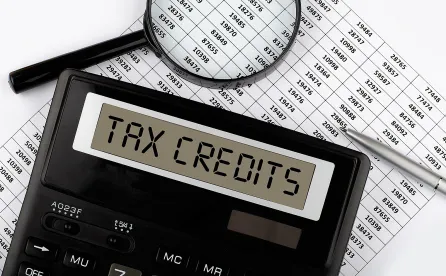IRS Warnings
The IRS continues to issue warnings alerting employers to be wary of promoters aggressively pushing schemes to claim the employee retention credit (the ERC). The IRS has also added these promoter claims to its annual “Dirty Dozen” list of tax scams. Satisfying eligibility requirements is not as simple as having paid wages to employees during the pandemic. While some requirements are objective in nature, many employers feel lost when navigating whether they qualify for the ERC because of a partial suspension or shutdown of operations. Many practitioners expect the issue of partial shutdowns to be a key area the IRS will target in audits and examinations.
What is the ERC?
In broad terms, the ERC offers eligible employers, including tax-exempt organizations, a refundable credit of up to $26,000 per employee for wages paid during the combined 2020 and 2021 tax years. Congressional intent behind the ERC was to reward employers that kept employees on their payroll during the pandemic. Employers can claim the ERC by amending quarterly federal employment tax returns for 2020 and 2021, and the credit is a refundable offset to the employer’s portion of Social Security taxes.
There are two primary ways for an employer to be eligible for the ERC:
(1) the employer experienced a significant decline in gross receipts (as compared to 2019, less than 50% in 2020 and less than 80% in 2021), or
(2) the employer experienced a full or partial shutdown of operations due to a governmental order limiting commerce, travel, or group meetings due to COVID-19.
Eligibility is not related in any manner to the industry in which the employer operates. For employers that did not have a significant decline in gross receipts, many wonder whether their business is eligible due to a partial shutdown of operations.
What is a partial shutdown?
In addressing partial shutdowns, the IRS guidance does not outright define a partial shutdown, but instead offers a series of Q&As on what constitutes a full or partial shutdown, noting that this determination is based on the particular facts and circumstances. See IRS Notice 2021-20, Q&As 11 through 22. Here are the main takeaways from these Q&As regarding partial shutdowns:
-
An employer claiming a partial shutdown needs to demonstrate that the portion of the business required to close was more than a nominal portion of the overall operations.
-
Businesses that had to close physical locations or operations but were able to continue comparable operations remotely and through telework did not experience a partial shutdown.
-
Businesses that were open but subject to governmental orders requiring modifications to operations, such as implementing social-distancing protocols, may have experienced a partial shutdown — but only if the required modifications had more than a nominal effect on the employer’s business operations. Mask-wearing requirements alone are not enough.
-
Qualifying under a partial shutdown based on supply chain issues is difficult. The IRS guidance provides one very narrow example on supply chain issues, and citing global supply chain difficulties during the pandemic is unlikely to withstand IRS scrutiny.
-
An employer that voluntarily suspended operations or experienced reduced customer demand due to governmental orders but was otherwise permitted to operate will not qualify for a partial shutdown.
Common Pitfalls
Here are some common pitfalls in qualifying for and claiming the ERC that aggressive promoters often gloss over or fail to mention:
-
“Large employers” (more than 100 full-time employees for 2020 and more than 500 full-time employees for 2021) may only claim the credit with respect to employees who were paid but were not performing services for the employer. Some employers may be subject to complex aggregation rules due to common ownership or management resulting in them being aggregated into a “large employer.” The amount of the ERC that these employers may claim is often significantly reduced due to these rules.
-
Congress repealed the ERC for the fourth quarter of 2021, except for certain recovery startup businesses.
-
Employers that have claimed the ERC for wages paid may not also claim a deduction on their income tax returns for those wages. An employer may need to file amended income tax returns (both federal and state) and may owe more in income taxes as a result. This issue frequently arises in M&A due diligence and can lead to extensive negotiations between the parties on claiming the ERC, which party can amend tax returns, and which party is entitled to the credit.
-
The statute of limitations for the IRS to assess taxes is generally three years from when a return is filed. However, for ERC claims for the third and fourth quarters of 2021, the IRS has an extended period of five years to assess taxes.




 />i
/>i

